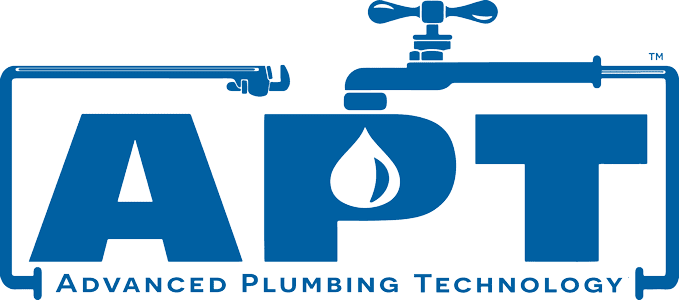The Role of Venting in Plumbing: How Proper Ventilation Prevents Problems
September 24th, 2023Posted by Brian Shoemaker
At Advanced Plumbing Technology, we understand that the intricate workings of plumbing systems can often seem like a hidden world beneath our floors and within our walls. However, this hidden world plays a crucial role in maintaining the functionality and efficiency of our homes. One often-overlooked aspect of plumbing that holds immense significance is ventilation. In this comprehensive guide, we will delve into the vital role of venting in plumbing systems, explaining how proper ventilation not only prevents problems but also contributes to the overall health and longevity of your plumbing setup.
Understanding the Importance of Venting
When it comes to plumbing, the importance of proper ventilation cannot be overstated. Ventilation systems in plumbing serve a dual purpose: they help to remove harmful gases and odors while allowing air to flow through the pipes, maintaining equilibrium in pressure. Without adequate ventilation, your plumbing system can experience a host of issues that range from foul odors and slow drainage to more severe problems like pipe corrosion and even health hazards.
Preventing Drainage Problems
One of the primary functions of venting is to prevent drainage problems. As water flows through your pipes, it displaces air, creating pressure that can slow down the water’s movement. Without proper ventilation, this pressure buildup can lead to sluggish drainage, causing water to back up in sinks, showers, and toilets. Slow drainage not only disrupts your daily routines but also poses the risk of water damage to your property.
Maintaining Proper Pressure
Imagine a scenario where you pour water from a bottle – the liquid flows smoothly because air can easily enter the bottle to replace the displaced liquid. Plumbing systems work on a similar principle. As water flows through the pipes, it needs air to replace the space it occupies. Ventilation pipes provide an avenue for this exchange of air, maintaining a balanced pressure within the plumbing system. This equilibrium prevents issues like gurgling sounds in drains, which can be indicative of pressure imbalances.
Preventing Foul Odors
Nobody wants to deal with unpleasant odors in their homes, especially not emanating from the plumbing. Proper venting plays a pivotal role in preventing foul odors from infiltrating your living spaces. As wastewater travels down the drainpipes, it carries with it various gases that can produce foul smells. Ventilation pipes redirect these gases upwards and away from your home, ensuring that you’re not greeted by unwelcome odors every time you enter your bathroom or kitchen.
Minimizing Corrosion and Pipe Damage
Inadequate ventilation doesn’t just impact the air quality within your home – it can also lead to serious structural problems in your plumbing system. When moisture-laden air becomes trapped in pipes, it can lead to corrosion over time. Corroded pipes are not only prone to leaks but can also release harmful contaminants into your water supply. Proper venting helps mitigate this risk by ensuring that excess moisture and gases are safely directed out of the system, preserving the integrity of your pipes and preventing costly damage.
Enhancing Overall Health and Safety
Perhaps the most critical aspect of proper plumbing ventilation is its impact on health and safety. Incomplete combustion of gases in appliances like water heaters can result in the production of carbon monoxide, a colorless and odorless gas that can be life-threatening. Proper ventilation ensures that these gases are effectively carried out of your home, safeguarding your family from the dangers of carbon monoxide poisoning.
The Components of a Venting System
Now that we’ve established the importance of plumbing ventilation, let’s explore the key components that make up an effective venting system:
- Vent Pipes: These vertical pipes extend from drainpipes to the roof, providing an escape route for gases and odors. Vent pipes are strategically positioned to allow the free flow of air and the release of gases into the atmosphere.
- Drainpipes: These horizontal pipes carry wastewater away from your fixtures and appliances. Vent pipes are connected to drainpipes, ensuring that the air displaced by the flowing water can escape through the ventilation system.
- Traps: Traps are U-shaped sections of pipes located beneath sinks, showers, and toilets. They hold a small amount of water that acts as a barrier against sewer gases. Vent pipes prevent the water in traps from being siphoned out, maintaining the integrity of the gas barrier.
Common Venting Configurations
Plumbing systems can employ various venting configurations to suit different layouts and structures. Some common venting setups include:
- Single Stack System: In this configuration, a single vent pipe serves multiple fixtures on each floor. This setup is commonly used in residential buildings with fewer plumbing fixtures.
- Wet Vent System: A wet vent system combines venting with the drainage function. This setup is often used in bathrooms where the drainpipe also serves as a vent for other fixtures.
- Loop Vent System: Loop venting involves connecting multiple fixtures to a single vent pipe, creating a loop that ensures adequate ventilation. This system is effective for kitchens with island sinks and other complex layouts.
Maintaining and Troubleshooting Venting Systems
While a well-designed venting system is crucial, its maintenance is equally important. Over time, debris, leaves, and even bird nests can obstruct vent pipes, impeding the flow of air. Regular inspections and cleaning can help prevent such obstructions and ensure the continuous performance of your plumbing ventilation system.
If you encounter issues like slow drainage, gurgling sounds, or foul odors, it’s essential to consult professionals for thorough diagnostics and timely solutions. Advanced Plumbing Technology reminds you that ignoring venting problems can lead to more extensive and costly plumbing issues down the line.
